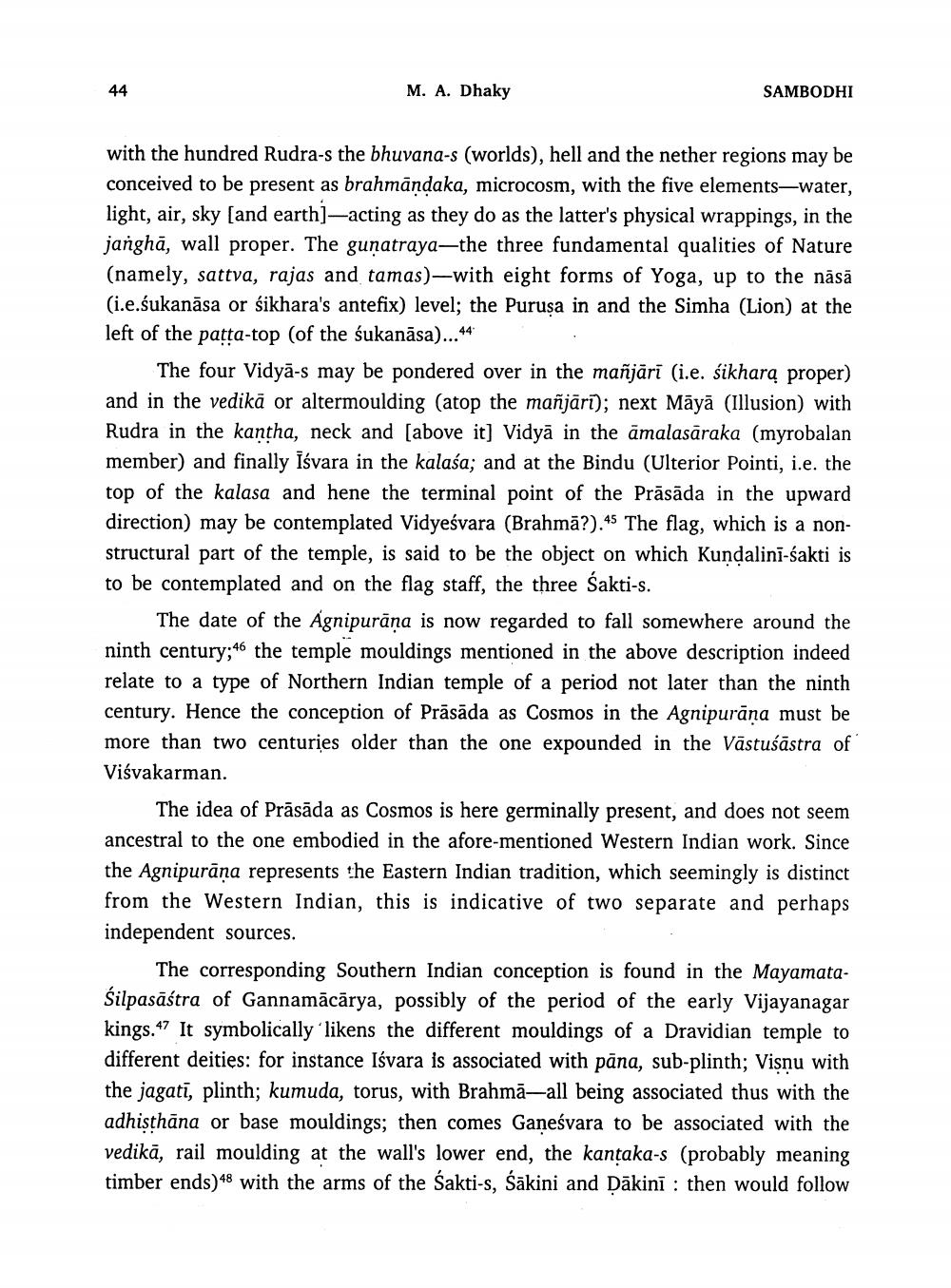________________
44
M. A. Dhaky
SAMBODHI
with the hundred Rudra-s the bhuvana-s (worlds), hell and the nether regions may be conceived to be present as brahmāndaka, microcosm, with the five elements—water, light, air, sky (and earth]-acting as they do as the latter's physical wrappings, in the janghā, wall proper. The gunatraya—the three fundamental qualities of Nature (namely, sattva, rajas and tamas)—with eight forms of Yoga, up to the nāsā (i.e.sukanāsa or śikhara's antefix) level; the Purusa in and the Simha (Lion) at the left of the patta-top (of the sukanāsa)...44
The four Vidyā-s may be pondered over in the mañjārī (i.e. śikharą proper) and in the vedikā or altermoulding (atop the mañjārī); next Māyā (Illusion) with Rudra in the kantha, neck and (above it] Vidyā in the āmalasāraka (myrobalan member) and finally Iśvara in the kalasa; and at the Bindu (Ulterior Pointi, i.e. the top of the kalasa and hene the terminal point of the Prāsāda in the upward direction) may be contemplated Vidyeśvara (Brahmā?).45 The flag, which is a nonstructural part of the temple, is said to be the object on which Kundalini-sakti is to be contemplated and on the flag staff, the three Śakti-s.
The date of the Agnipurāna is now regarded to fall somewhere around the ninth century;46 the temple mouldings mentioned in the above description indeed relate to a type of Northern Indian temple of a period not later than the ninth century. Hence the conception of Prāsāda as Cosmos in the Agnipurāna must be more than two centuries older than the one expounded in the Vāstuśāstra of Višvakarman.
The idea of Prāsāda as Cosmos is here germinally present, and does not seem ancestral to the one embodied in the afore-mentioned Western Indian work. Since the Agnipurāna represents the Eastern Indian tradition, which seemingly is distinct from the Western Indian, this is indicative of two separate and perhaps independent sources.
The corresponding Southern Indian conception is found in the MayamataSilpasāstra of Gannamācārya, possibly of the period of the early Vijayanagar kings.47 It symbolically likens the different mouldings of a Dravidian temple to different deities: for instance Isvara is associated with pāna, sub-plinth; Visnu with the jagati, plinth; kumuda, torus, with Brahmā—all being associated thus with the adhisthāna or base mouldings; then comes Ganeśvara to be associated with the vedikā, rail moulding at the wall's lower end, the kantaka-s (probably meaning timber ends) 48 with the arms of the Śakti-s, Śākini and Dākini : then would follow




